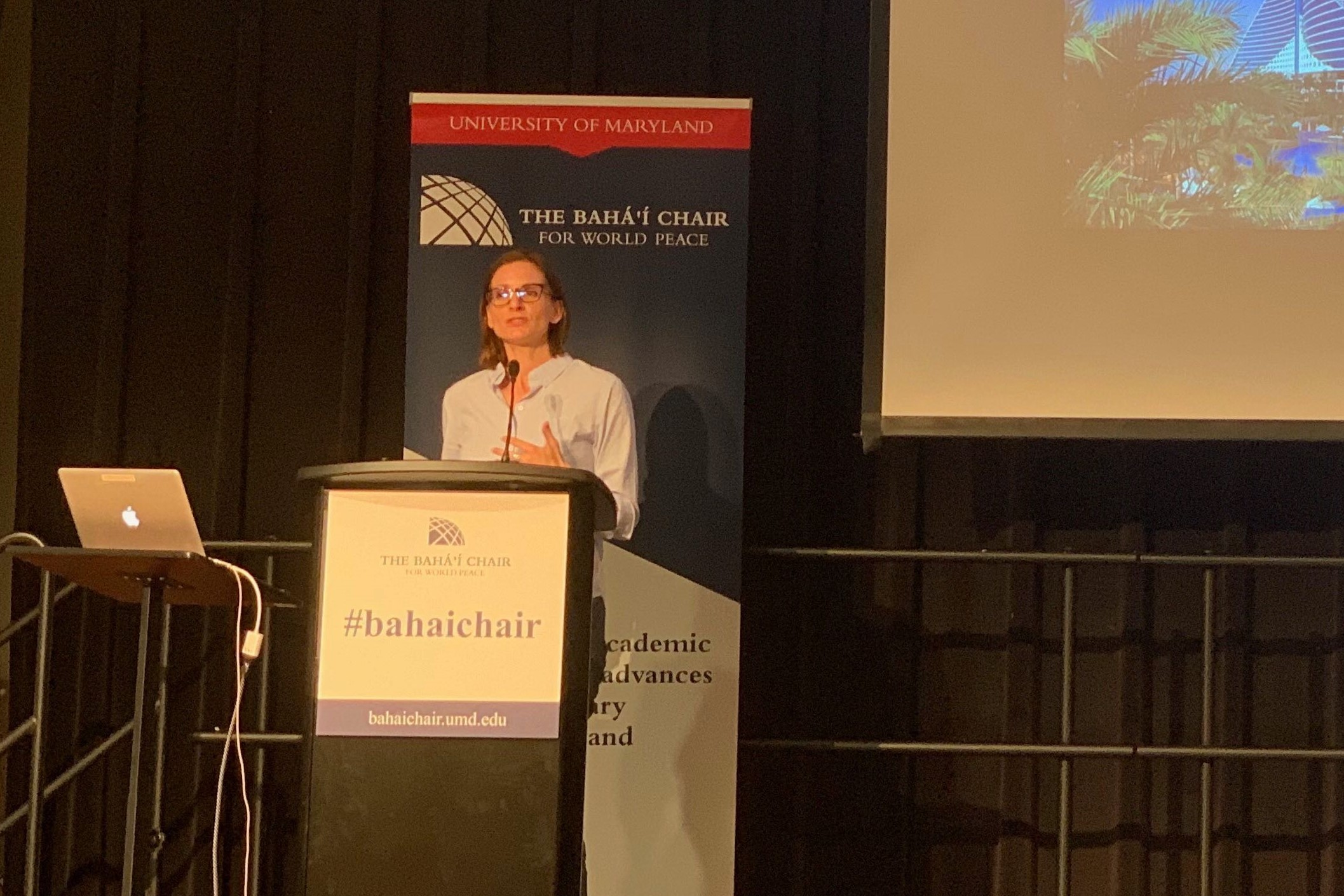By Ryan Wu
For The Diamondback
When Louise Lambert arrived at work, she discovered her office floor didn’t have any windows — only a few rectangular holes to let some light in.
When she drove home to her apartment, Lambert again noticed the large windows in her apartment faced a wall that limited the exposure to natural sunlight.
“It seemed funny at first, but later I started to feel kind of boxed in because neither my apartment nor my office had windows,” said Lambert, the founder of the Middle East Journal of Positive Psychology, a social work institution serving the Middle East and North Africa. “There was no sunshine for the whole day except for the commute.”
Lambert said Dubai — her home for the last 10 years — and other cities across the world have overlooked the benefits of developing infrastructure that makes people feel relaxed.
“Having places where we’re able to disconnect, clear our minds and slow down is important … but this doesn’t always come out in terms of infrastructure,” said Lambert during the second day of the Infrastructure and Happiness Conference, hosted by the Bahá’í Chair for World Peace on Thursday and Friday.
[Read more: College Park will install over 100 pedestrian lights on Route 1]
Aside from buildings that are poorly designed, Lambert said commuting is another burden that people face in urban environments. Many commuters in the D.C. metro area are aware of their lengthy trips to and from work, which often mean they have less time to prepare food and spend time with kids. In 2017, the U.S. Census Bureau found that Washington, D.C., had the second longest average commute time in the country.
“It’s [a] pretty miserable experience parked, trapped on the freeway for three hours. It’s worse for women if the commuting partner’s the man. While he’s stuck in traffic, women have to do all the cooking, cleaning and [taking] care of the kids,” Lambert said.
Lambert recommended urban planners take residents’ happiness into account when planning public spaces and suggested building parks and installing turf, mini-golf courses and flowers on busy urban streets. Planners should even consider building quiet spaces for people recovering from mental illness, introverts and the elderly.
“That’s where we can see the heights humans are able to reach and that often comes out in great design. It really adds lights to family life and organizations but also to cities and nations as a whole,” she said.
Lambert said not only should urban planners start designing happier cities, but university facilities must also begin bridging different fields like architecture, design and engineering together to address these problems on several levels.
“By the time they get into the workforce, they’re ready to start developing cities and spaces they already on their minds,” Lambert said.
Dr. Hoda Mahmoudi, the holder of Bahá’í Chair for World Peace, said she hoped the panel would use science to address real-world issues like mental health.
“We wanted to search for some of the best academic and practitioners to come and present their findings, ideas and solutions to these problems,” Mahmoudi said.
Today, many people are disillusioned, anxious and stressed, she said. Designing better cities to make them less anxiety-provoking “is vital to world peace and is directly related to peaceful societies.”
Tiana Wilson, a sophomore government and politics and sociology major, said College Park could incorporate some of Lambert’s recommendations for better urban planning, including more community centers for young people and better accommodations for the elderly.
“Sometimes we don’t realize your happiness could have something to do with the very place you are in,” Wilson said.



